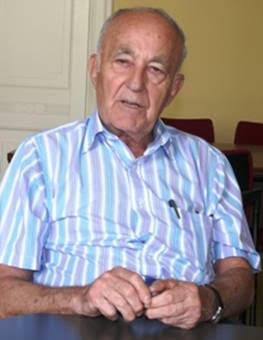
THE VOICE OF INTERNATIONAL LITHUANIA
|
VilNews has its own Google archive! Type a word in the above search box to find any article.
You can also follow us on Facebook. We have two different pages. Click to open and join.
|
Archive for January, 2012
- Posted by - (0) Comment
The Polish-Lithuanian
War 1919-1920
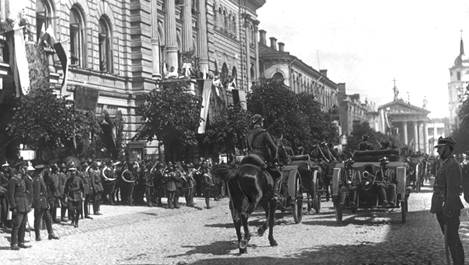
South-eastern Lithuania, Vilnius included, was occupied by Poland
during the interwar period. Picture: Celebration of the incorporation
of Vilnius Region to Poland, 1922.
The Polish–Lithuanian War was an armed conflict between Lithuania and Poland in the aftermath of World War I and Lithuania's declaration of independence 16 February 1918.
VilNews' Associate Editor Vincas Karnila today introduces our readers to a series with a total of four articles about this war and the consequences it had for the relationship between the once good neighbours Poland and Lithuania.
The conflict primarily concerned territorial control of the Vilnius Region, including Vilnius, and the Suwałki Region, including the towns of Suwałki, Augustów, and Sejny. According to Lithuanian historians, the war was part of the Lithuanian Wars of Independence and spanned from spring 1919 to November 1920. According to Poland, the war included only fighting over the Suwałki Region in September–October 1920 and was part of the Polish–Soviet War.
After Vilnius was occupied by the Russian Bolsheviks in 1919, the government of the Republic of Lithuania established its main base in Kaunas. When Vilnius was forcibly annexed by Poland, Kaunas became the temporary capital of Lithuania, a position it held until 28 October 1939, when the Red Army handed Vilnius back to Lithuania. The Constituent Assembly of Lithuania first met in Kaunas on 15 May 1920. There were no diplomatic relations between Poland and Lithuania until 1938.
Introduction
As usually happens, the end of one hostility often results in the beginning of other hostilities. This was the case between Lithuania and Poland after the end of the First World War. With both countries in a state of war with Bolshevik Russia, defending themselves against Russia’s attempt to recapture and occupy the two countries that had just recently regained their independence, this helped to set the stage for armed conflict between the two neighbors. This combined with one country’s plan to control part of Europe, claims to land based on its population and the continued “carving up” of smaller countries by larger countries all helped to create what was known as the Polish – Lithuanian War which resulted in Lithuania losing its capital of Vilnius and other parts of its country to Polish occupation during the interim war period.
Dear readers we would like to invite you review this series which will offer insight as to what led to the conflict, the reasons and justifications, the participants, the areas of action and some of the key events. As always we warmly welcome any additional information and any comments you would like to share.
Su pagarbe Vincas Karnila, Associate editor
vin.karnila@VilNews.com
- Bookmark :
- Digg
- del.icio.us
- Stumbleupon
- Redit it
- Posted by - (4) Comment
|
War 1919-1920
The Polish–Lithuanian War was an armed conflict between Lithuania and Poland in the aftermath of World War I and Lithuania's declaration of independence 16 February 1918. VilNews' Associate Editor Vincas Karnila today introduces our readers to a series with a total of four articles about this war and the consequences it had for the relationship between the once good neighbours Poland and Lithuania. The conflict primarily concerned territorial control of the Vilnius Region, including Vilnius, and the Suwałki Region, including the towns of Suwałki, Augustów, and Sejny. According to Lithuanian historians, the war was part of the Lithuanian Wars of Independence and spanned from spring 1919 to November 1920. According to Poland, the war included only fighting over the Suwałki Region in September–October 1920 and was part of the Polish–Soviet War. After Vilnius was occupied by the Russian Bolsheviks in 1919, the government of the Republic of Lithuania established its main base in Kaunas. When Vilnius was forcibly annexed by Poland, Kaunas became the temporary capital of Lithuania, a position it held until 28 October 1939, when the Red Army handed Vilnius back to Lithuania. The Constituent Assembly of Lithuania first met in Kaunas on 15 May 1920. There were no diplomatic relations between Poland and Lithuania until 1938.
|
Introduction
As
usually happens, the end of one hostility often results in the beginning of
other hostilities. This was the case between Lithuania and Poland after the end
of the First World War. With both countries in a state of war with Bolshevik
Russia, defending themselves against Russia’s attempt to recapture and occupy
the two countries that had just recently regained their independence, this
helped to set the stage for armed conflict between the two neighbors. This
combined with one country’s plan to control part of Europe, claims to land
based on its population and the continued “carving up” of smaller countries by
larger countries all helped to create what was known as the Polish – Lithuanian
War which resulted in Lithuania losing its capital of Vilnius and other parts
of its country to Polish occupation during the interim war period.
Dear readers we would like to invite you review this series which will offer insight as to what led to the conflict, the reasons and justifications, the participants, the areas of action and some of the key events. As always we warmly welcome any additional information and any comments you would like to share.
Su pagarbe Vincas Karnila, Associate editor
vin.karnila@VilNews.com
Part 1 of 4 - THE BUILD UP
MILITARY DEVELOPMENTS
World War I ended on November 11, 1918 when Germany signed the Compiègne Armistice. On November 13, Soviet Russia renounced the Treaty of Brest-Litovsk (After signing the Treaty of Brest-Litovsk March 3 1918, Bolshevik Russia lost the European lands it annexed in the 18th century and 19th century. Most of today's Poland, Belarus, Ukraine and the Baltic States were passed to the government of Germany, which in turn decided to grant these states limited independence as buffer states) and began the Soviet westward offensive of 1918–1919. The Bolsheviks followed retreating German troops and attacked Lithuania and Poland from the east trying to prevent their independence. They attempted to spread the global proletarian revolution, establish Soviet republics in the region, and join the German and the Hungarian Revolutions. The Soviet offensive sparked a series of local wars, including the Polish–Soviet War and the Lithuanian–Soviet War. At first the Soviets were successful, but came to a halt in February 1919. In March–April both Lithuanians and Poles began their offensives against the Soviets. The three armies met in the Vilnius Region. The Polish–Lithuanian relations were not immediately hostile, but grew worse as each side refused to compromise. On April 19, 1919, the Polish Army captured Vilnius.

The
advance of Polish (blue arrows), Lithuanian/German (dark purple arrows) against
the Soviet forces in early 1919. The blue line shows the Polish front in May
1920. The red line shows the Soviet front in February 1919
At first, both Poles and Lithuanians cooperated in their offensive against the Soviets, but soon the cooperation gave way to increasing hostility. Lithuania claimed neutrality in the Polish–Soviet War. As the Polish Army forced its way further into Lithuania, the first clashes between Polish and Lithuanian soldiers occurred on April 26 and May 8, 1919, near the village of Vievis. Though there was no formal state of war and few casualties, by July newspapers reported increasing clashes between Poles and Lithuanians, primarily around the towns of Merkinė and Širvintos. Direct negotiations in Kaunas between May 28 and June 11, 1919, collapsed as neither side agreed to compromise. Lithuania tried to avoid direct military conflict and submitted its case for mediation to the Conference of Ambassadors (The Conference was formed to enforce peace treaties and to mediate various territorial disputes among European states. The Conference consisted of ambassadors of Great Britain, Italy, and Japan accredited in Paris and the French minister of foreign affairs. The ambassador of the United States attended as an observer because the U.S. was not an official party to the Treaty of Versailles).
DIPLOMATIC DEVELOPMENTS
Poland did not recognize the independence of Lithuania as Polish leader Józef Piłsudski hoped to revive the old Polish–Lithuanian Commonwealth and campaigned for some kind of Polish–Lithuanian union in the Paris Peace Conference. Poland also did not intend to make any territorial concessions, justifying its actions not only as part of a military campaign against the Soviets but also as the right of self-determination of local Poles. According to the 1897 Russian census, the disputed city of Vilnius had an ethnic breakdown of 30% Poles, 40% Jews, and 2% Lithuanians; however the percentage of Lithuanians was much higher in the surrounding countryside. According to the 1916 German census, Poles constituted 50% of city's population. The Lithuanians claimed Vilnius as their historical capital and refused any federation with Poland, desiring an independent Lithuanian state.
They regarded Polish federalism as recreation of Polish cultural and political dominance. The Lithuanian government in Kaunas, designated as the temporary capital, saw the Polish presence in Vilnius as an occupation. In addition to the Vilnius Region, the Suwałki Region was also disputed due to the fact it had a mixed Polish and Lithuanian population. In effect what Poland was saying was that if many Poles lived in an area, the area should be/is a part of Poland regardless of the fact that the area was in another country.
At the time the international situations of newly independent Poland and Lithuania were unequal. Poland, much larger in territory and population, was dedicated point 13 in Woodrow Wilson's Fourteen Points (The Fourteen Points was a speech given by United States President Woodrow Wilson to a joint session of Congress on January 8, 1918. The address was intended to assure the country that the Great War was being fought for a moral cause and for postwar peace in Europe. Point 13 was – “An independent Polish state should be erected which should include the territories inhabited by indisputably Polish populations, which should be assured a free and secure access to the sea, and whose political and economic independence and territorial integrity should be guaranteed by international covenant”).
Poland was recognized by all nations of the Entente, officially invited to the Paris Peace Conference and became one of the founding members of the League of Nations. Poland also enjoyed a close alliance with France. Lithuania did not receive international recognition (it was first recognized formally in July 1920 by Soviet Russia) as the Entente hoped to revive the Russian Empire within its former territory, which included Lithuania. Lithuania was not invited to any post-war diplomatic conferences. It also had to battle negative propaganda that the Council of Lithuania was a German puppet, that Lithuanians harbored pro-Bolshevik attitudes or that Lithuania was too small and weak to survive without a union with Poland.
MAY to SEPTEMBER 1919 – RISING TENSIONS
DEMARCATION LINES

Map of
demarcation lines of June 18 (light green) and July 26 (dark green) between
Poland and Lithuania. Poland ignored both lines and continued to advance up to
the orange line. Railroads are marked by black stitched lines.
The Conference of Ambassadors drew the first demarcation line on June 18. The line, drawn about 5 km (3.1 mi) west of the Warsaw – Saint Petersburg Railway, was based on the military situation on the ground at that time rather than ethnic composition. Neither Poles nor Lithuanians were content with the line. The Polish Ministry of Foreign Affairs rejected the line as it would require the Polish forces to retreat up to 35 km (22 mi). The Lithuanians protested leaving Vilnius and Hronda under Polish control. As German volunteers were departing from Lithuania and Lithuanian forces were preoccupied with battles against the Soviets in northern Lithuania, Poland mounted an offensive on a 100 km (62 mi) wide front moving 20–30 km (12–19 mi) deeper into the Lithuanian territory and Lithuania could not organize an effective defense to counteract this offensive.

Ferdinand Foch
On July 18, Ferdinand Foch proposed the second demarcation line, known as the Foch Line. It was approved by the Entente on July 26. The Lithuanians were informed about the new line only on August 3. Two major modifications favorable to the Poles were made: the Suwałki Region was assigned to Poland and the entire line was moved about 7 km (4.3 mi) west. Again, both Poles and Lithuanians protested the line as it would require them to withdraw their armies from the Vilnius and Suwałki Regions respectively. The German administration, which had not yet retreated from the Suwałki Region, also opposed the Foch Line. The new line did not immediately halt the hostilities. After a couple of Polish attacks on July 29 and August 2, the front stabilized.
THE SEJNY UPRISING
The Lithuanians obeyed the Foch Line and retreated from Suwałki on August 7, 1919. However, they stopped in ethnically mixed Sejny and formed a line on the Czarna Hancza river – Wigry Lake. They showed their intention to stay there permanently, which caused concern among the local Poles. On August 12, the Poles of that area organized a rally of about 100 people demanding incorporation into Poland. The Sejny branch of Polish Military Organization (PMO) began preparing for an uprising, scheduled for the night of August 22 to 23, 1919 and between 900 and 1,200 partisans joined PMO forces. On August 23, the Poles captured Sejny and attacked the towns of Lazdijai and Kapčiamiestis on the Lithuanian side of the Foch Line. The insurgents planned to march as far as Simnas (located 23 km west of Alytus). Lithuanians recaptured Sejny on August 25 for a few hours. On August 26, Polish regular forces – the 41st Infantry Regiment – joined the PMO volunteers. On September 5, the Lithuanians agreed to withdraw behind the Foch Line by September 7. Poland secured Sejny and repressed Lithuanian cultural life: the Sejny Priest Seminary was expelled, Lithuanian schools and cultural organizations closed. After the uprising, the mistrust of Poles prompted Lithuanian intelligence to intensify its investigations of Polish activities in Lithuania. This helped to detect and prevent a planned coup d'état in Kaunas to overthrow the government of Lithuania.

Polish cavalry parade
in Sejny
THE PLOISH COUP ATTEMPT
Sometime in mid-July 1919, PMO forces in Vilnius began planning a coup to replace the Lithuanian government with a pro-Polish cabinet, which would agree to a union with Poland of the proposed Miedzymorzr federation, also known as Intermarium was a plan, pursued by Polish leader Jozef Pilsudski, for a federation, under Poland's control of Central and Eastern European countries, invited to join the proposed federation were the Baltic states of Lithuania, Latvia, Estonia, Finland, Belarus, Ukraine, Hungary, Romania, Yugoslavia and Czechoslovalia. The proposed federation was meant to emulate the Polish-Lithuanian Commonwealth, stretching from the Baltic Sea to the Black Sea that, from the end of the 16th century to the end of the 18th, had united the Kingdom of Poland and the Grand Duchy of Lithuania. Intermarium complemented Piłsudski's other geopolitical vision of Prometheism, whose goal was the dismemberment of the Russian Empire and that Empire's divestment of its territorial conquests into Polish control. Intermarium was, however, perceived by some Lithuanians as a threat to their newly established independence, and by some Ukrainians as a threat to their aspirations for independence and was opposed by most Western powers.

Leon Wasilewski
Polish leader Jozeph Pilsudski believed there were enough Polish sympathizers in Lithuania to carry out the coup. On August 3, a Polish diplomatic mission led by Leon Wasilewski, in Kaunas had a double purpose: propose a plebiscite (common people’s law) in the contested territories and assess preparedness for the coup. On August 6, the Lithuanian government rejected the plebiscite proposal, stating that the disputed territories constitute ethnographic Lithuania. PMO planned to capture and hold Kaunas for a few hours until arrival of the regular Polish troops, situated only some 40–50 km (25–31 mi) east from the city. The coup would be portrayed as an initiative of the local population to "free Lithuania from German influence" while denouncing any involvement of the Polish government. Polish newspapers ran a propaganda campaign claiming that the Council of Lithuania was simply a German puppet. The coup was initially scheduled for the night of August 27 to 28, but was postponed to September 1. Lithuanian intelligence discovered the coup, but did not have a list of PMO members. Lithuanian authorities began mass arrests of some 200 Polish activists, including some officers of the Lithuanian Army. Kaunas was declared under a state of siege. Polish press saw the mass arrests of Polish activists "to whom no charge can be ascribed other than being Poles" as proof of systematic anti-Polish policies of the German-ridden Lithuanian government”. PMO was little affected by the arrests and scheduled another coup attempt for the end of September. However, Lithuanians obtained a full PMO membership list and liquidated the organization in Lithuania.
SEPTEMBER 1919 to JUNE 1920 - MORE POLISH ATTACKS
After the failure of the coup in Kaunas there were numerous incidents. On September 19, 1919, Polish troops attacked Gelvonai and continued towards Ukmergė. On several occasions fights broke out regarding a strategically important bridge over the Šventoji River near Verpriai. In October, when the main Lithuanian forces were deployed against the Bermontians (The West Russian Volunteer Army or Bermontians was an army in the Baltic provinces of the former Russian Empire during the Russian Civil War of 1918-1920) in northwestern Lithuania, the attacks intensified and Poles captured Salakas on October 5 and attacked Kapčiamiestis on October 12. The front stabilized, but harassment of border guards and local villagers continued throughout late 1919 and early 1920. In March 1920, the Poles attacked along the railroad stations in Kalkūni and Turmantas. The situation was investigated by British and French observers and reported to the Entente. The situation somewhat improved only in late spring of 1920 when most Polish troops were deployed to Ukraine during the Polish–Soviet War.
At the time Lithuania faced a severe budget crisis – in 1919 its revenue was 72 million while expenses reached 190 million German marks. While the government was struggling to obtain financial assistance and loans, deep cuts affected the army. Instead of increasing its armed forces to 40,000 men, Lithuania was forced to cut them to about 25,000.
In part 2 of 4 - ADAVANCES and RETEATS
- Bookmark :
- Digg
- del.icio.us
- Stumbleupon
- Redit it
- Posted by - (0) Comment

OP-ED COLUMNIST
‘The Suffering Olympics’
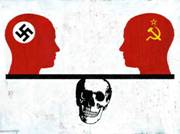
By ROGER COHEN
Published: January 30, 2012
VILNIUS, LITHUANIA — The “double genocide” wars that pit Stalin’s crimes against Hitler’s are raging in wide swathes of Europe and every now and again along comes a gust from the past to stoke them. The 70th anniversary this month of the Nazi adoption at Wannsee of annihilation plans for the Jews provided one such squall.
Yes, the past is still treacherous beneath Europe’s calm surface. Memory swirls untamed in the parts of the Continent that the American historian Timothy Snyder calls “Bloodlands,” the slaughterhouses from Lithuania to Ukraine that Hitler and Stalin subjected to their murderous whim.
To mark the Wannsee anniversary, over 70 European Parliament members, including 8 Lithuanians, signed a declaration objecting to “attempts to obfuscate the Holocaust by diminishing its uniqueness and deeming it to be equal, similar or equivalent to Communism.” It also rejected efforts to rewrite European school history books “to reflect the notion of ‘double genocide.”’
All of this was too much for the Lithuanian foreign minister, Audronius Azubalis, a conservative, who blasted the Lithuanian social democrat signatories as “pathetic.” His spokeswoman declared that the only difference between Hitler and Stalin was the length of their mustaches. She said legal qualifications of the crimes they committed were “absolutely the same”: genocide, war crimes and crimes against humanity.
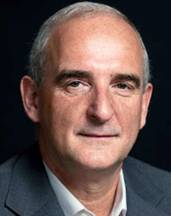
Roger Cohen
- Bookmark :
- Digg
- del.icio.us
- Stumbleupon
- Redit it
- Posted by - (0) Comment

Lithuania: not as bright as it seems
January 30, 2012
by Jonathan Wheatley
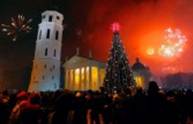
The mood turned sour again on European markets on Monday, as fresh worries about Greece rattled investors’ nerves. But that didn’t stop Lithuania getting a one-year bond auction away at a pretty impressive yield, on the day the country said its economy grew by a healthy 4.3 per cent last year.
Nevertheless, a glance behind the headline figures suggests that even where things look cheerful, investors should be cautious.
Lithuania sold 70m litas ($26.6m) of one-year debt with a yield of 2.74 per cent, Reuters reported, down from a yield of 3.876 per cent on 50m litas of debt maturing in August 2013 sold at the beginning of January. Average yields on Lithuanian one-year debt have fallen from more than 4 per cent at the end of November to 2.71 per cent today.
Lithuania and the other Baltic states, says Neil Shearing at Capital Economics, “have been the poster child for austerity in the face of crisis, pursuing internal devaluation and implementing big budget cuts despite huge falls in output.”
- Bookmark :
- Digg
- del.icio.us
- Stumbleupon
- Redit it
- Posted by - (0) Comment
The pride of
being Lithuanian

Illustration from: http://www.cafepress.com
Text: Aage Myhre
aage.myhre@VilNews.com
I've been asked why VilNews puts relatively much emphasis on articles with historical content. I've also been asked whether our journey around Europe in January should be presented in a publication that otherwise focuses on Lithuania.
My response is as follows:
Sooner or later the history knocks
at the door of the present
Lithuania’s Foreign Minister Audronius Ažubalis recently said this about the still latent conflict between Armenia and Turkey on the mass killing that took place during the First World War. He is of course right, and the statement is valid for us all, also Lithuania.
The Lithuanian people have for 200 years largely been deprived of the opportunity to know their own nation's history presented in an objective and outspoken way. Those who published historical documentation here were often people who deliberately swept some parts of Lithuania's history under the carpet, exaggerated on other aspects and deliberately misinformed the people. During the years when Lithuania was under Tsarist Russia, Nazi Germany and the Soviet Union, truth and authentic information was often forbidden or falsified. Today it is no longer so, but I still feel that the knowledge about own history among the people here is not very deep or comprehensive in many cases.
Lithuania is a country that more than many others should be seen and understood in the light of historical perspectives...
- Bookmark :
- Digg
- del.icio.us
- Stumbleupon
- Redit it
- Posted by - (1) Comment
The pride of being Lithuanian

Illustration
from: http://www.cafepress.com
Text: Aage Myhre
aage.myhre@VilNews.com
I've been asked why VilNews puts relatively much emphasis on articles with historical content. I've also been asked whether our journey around Europe in January should be presented in a publication that otherwise focuses on Lithuania.
My response is as follows:
Sooner or later the history knocks at the
door of the present
Lithuania’s Foreign Minister Audronius Ažubalis recently said this about the still latent conflict between Armenia and Turkey on the mass killing that
took place during
the First World War. He is of course right, and the statement is valid for us
all, also Lithuania.
The Lithuanian people have for 200 years largely been deprived of the opportunity to know their own nation's history presented in an objective and outspoken way. Those who published historical documentation here were often people who deliberately swept some parts of Lithuania's history under the carpet, exaggerated on other aspects and deliberately misinformed the people. During the years when Lithuania was under Tsarist Russia, Nazi Germany and the Soviet Union, truth and authentic information was often forbidden or falsified. Today it is no longer so, but I still feel that the knowledge about own history among the people here is not very deep or comprehensive in many cases.
Lithuania is a country that more than many others should be seen and understood in the light of historical perspectives. It is only when one becomes familiar with this nation's dramatic background that one can begin to understand more about the nation’s values and qualities. And it is this perspective we want to have as a backdrop for our articles in VilNews.
We want our readers to have access to deep knowledge of what has happened of good and bad here. Also in cases when this enforces tough confrontations with the past. For example what happened during the Holocaust, the guerrilla warfare that took place in the post-war years, as well as the many abuses carried out by Soviet and its henchmen during WWII and the 50 years that followed.
But Lithuania has also an infinite amount of history to be proud of. Take as an example the 300 years when the country was a world superpower, known as the Grand Duchy of Lithuania. It was the wise leaders of this period who caused the British historian Norman Davies to describe Lithuania as "a haven of tolerance".
Lithuania’s dramatic, bloody history during the period 1919 – 1991
|
|
|
|
|
|
|
|
|
Lithuania is back in the European family

Lithuania is back in good old Europe. A Europe that has seen dramatic changes through century after century, but that will forever remain "home & castle" for us Europeans. Lithuania played once a very significant role for this continent, but is now to be considered a newcomer into its former neighbourhood. It is, however, in this neighbourhood Lithuania belongs. And now it's time to get to know the neighbours and find the nation’s rightful place in this context.
You who have followed us on our journey through Europe in January, may have learned a little more about the different countries we visited. You may have also seen that there are prominent Lithuanian footprints in pretty much every European country.
Lithuania is now free to revive friendships and relations with its neighbours. Border crossings are open as never before. Despite the differences, it is here in the European family that Lithuania belongs.
But family and neighbourhood also represents commitments. This must be taken seriously.
Lithuanians have many good reasons to feel pride in their homeland. Having knowledge of historical and geographical context is an important prerequisite for the emergence of modern Lithuania, and our VilNews will therefore also in the future focus on bringing information that sheds light on these aspects.
- Bookmark :
- Digg
- del.icio.us
- Stumbleupon
- Redit it
- Posted by - (0) Comment
RE: Our January Europe tour has come to its end.
Right in time, my friend; just as Davos 2012 ends!

Pls forgive some sarcasm but very unlikely EU countries, like the Soviet communist exploited and impoverished Lithuania, have long showed the way to Europe by adopting serious austerity policies that go almost to the point of "eating the dog food", to use a hyperbole. Unfortunately, this good model that Davos 2012 has been looking so desperately for (and could not find) is drowned in the cacophony of bureaucratic screams around bailing out Greece and other profligate countries that are, so far at least, the true winners in Europe! The whole Europe will soon "go to the dogs"; so your Journey was not a month too soon, Aage.
My advice now: invest in the European dog food :)
Valdas Samonis,
Toronto.
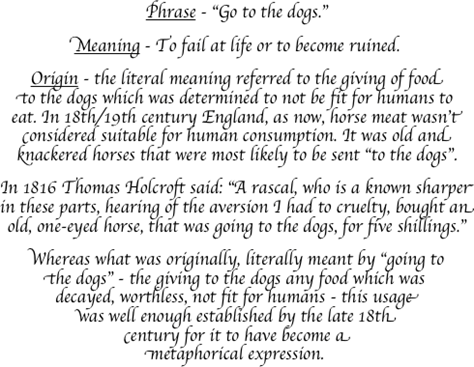
- Bookmark :
- Digg
- del.icio.us
- Stumbleupon
- Redit it
![]()

Ruta Brazis-Velasco
- Bookmark :
- Digg
- del.icio.us
- Stumbleupon
- Redit it
Thank You-Aciu!!!!!
- Posted by - (0) Comment
![]()

Meiloute Marquez
- Bookmark :
- Digg
- del.icio.us
- Stumbleupon
- Redit it
I love reading your posts and articles, but most of all I love looking at your photographs! You should publish a catalogue of the photographs…I think that I may even void any royalties concerning the ones that I am in ;-)
- Posted by - (0) Comment
- Bookmark :
- Digg
- del.icio.us
- Stumbleupon
- Redit it
![]()

Karenkay Ketcheson
Olson-Sharp
- Bookmark :
- Digg
- del.icio.us
- Stumbleupon
- Redit it
- Posted by - (0) Comment
Audronius Azubalis:
Sooner or later the history knocks at the door of the present
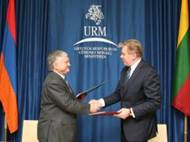
Foreign Minister Edward Nalbandian of Armenia and Lithuanian Foreign Minister Audronius Azubalis. Vilnius, 26 January2012.
Photo: urm.lt
Armenian Foreign Minister Edward Nalbandian paid a working visit to Lithuania on January 26. Within the framework of eth visit Minister Nalbandian had meetings with Lithuania’a Prime Minister Andrius Kubilis, Foreign Minister Audronius Azubalis and Vice-Speaker of Sejm Cheslovas Yurshenas.
At a joint press conference with his Lithuanian counterpart Edward Nalbandian expressed gratitude to Lithuania for adoption of the Armenian Genocide act back in 2005.
“The arguments of Turkey do not stand any criticism. They say the bill passed by the French Senate will hinder the process of normalization of the Armenian-Turkish relations. However, it’s clear to everyone that it’s only Turkey that prevents that normalization. Turkey says the French law edits history. Unfortunately, the black pages of the tragic history of our nation have already been written, and the only way to turn these pages is the recognition and condemnation of this crime against humanity.
The bill passed by the French Senate is not targeted against any concrete country, the Armenian Foreign Minister said, adding that Turkey’s reaction is an evidence of that country’s state policy of denial.
Referring to the same issue, the Lithuanian Foreign Minister said: “Sooner or later the history knocks at the door of the present, and we have to open it. We have to look the history in the face and assess the reality in an open, transparent and fair way. Without that we’ll never have peace in stable inter-state relations. That is why I think that right are the politicians who say that history must be discussed, while those who say history should be left to historians are wrong. Mistrust in bilateral relations will exist until we square accounts with the past.”
- Bookmark :
- Digg
- del.icio.us
- Stumbleupon
- Redit it
- Posted by - (0) Comment
EUROPE – MY HOME & MY CASTLE (10 of 10)
 |
Turkey, where Europe meets Asia |
|
Today we publish the last travel report
Tour guide, writer and photographer: Aage Myhre To read today’s travel report, click HERE To read the previous articles, go to our SECTION 11 |
- Bookmark :
- Digg
- del.icio.us
- Stumbleupon
- Redit it
- Posted by - (2) Comment
EUROPE – MY HOME & MY CASTLE (10 of 10)
|
|
Turkey, where Europe meets Asia |
|
Today we publish the last travel report Tour guide, writer and photographer: Aage Myhre
|
|
|
|
|
|
I am in Hotel Conrad in Istanbul. The view from the terrace outside my hotel room is amazing. I look down at the beautiful city I've learned to like so well. The boats on the Bosporus Strait bustle frantically back and forth between the Asian and the European side. Large ships are headingtowards the Black Sea. Others to the Mediterranean Sea. It must have been quite a sight to see the armada of Viking ships sailing in here in the year 860. The Vikings came to plunder. They had travelled far; starting from the Baltic Sea, following the rivers through Russia, by then ruled by a Viking, Rurik. They came to the Caspian Sea and the Black Sea. From there it was only a short distance through the Bosporus Strait until Istanbul, or Miklagard (‘The Great City’) as they named the city – at that time the capital of the Eastern Roman Empire, with hundreds of thousands of residents and colossal treasures the Vikings had never seen before. |
Huge walls met them when they sailed in here from the Black Sea and docked in the harbour of the Golden Horn. The huge wealth made contemporary Istanbul a tempting prey for the Vikings, but the size made them chose to go into service of the emperor instead of trying to conquer the city. He appointed them to a guard of mercenaries, known as 'The Varings.' Their most famous chief was Harald Hardrada (1015 - 1066), half brother to the Norwegian king Olav who was killed in the famous Battle of Stiklestad outside Trondheim in the year 1030. Harald became king of Norway in the year 1046. During the seven years he was here in Miklagard, he had a comet career and was named the top-commander of the The Varings. From Constantinople he led a total of 18 major battles around the Mediterranean Sea, such as against Sicily and North Africa. He conquered no less than 80 cities. The Vikings’ era in Istanbul came to an end after 344 years(!) here on the banks of the Bosporus, in 1204, when the Crusaders conquered the city.
From my terrace I look over to the mosque that was once the world’s largest church building, Hagia Sophia (Holy Wisdom Church). It was completed in the year 537. On one of the pillars is written, clearly visible to this day, 'Halvdan was here'. Carved into the pillar-marble in the contemporary Norse language, the Runes, some time at the end of the 800's. Think about it. A Norwegian Viking was behind the world's first graffiti ...
Down at the Bosporus shore I see the lavishly beautiful Dolmabahce Palace. It was there in the palace he died in 1938, Turkey's first president, Mustafa Kemal Ataturk (1881-1938). Founder of the country as a republic and a modern, democratic society, a revolutionary and wise statesman, who more than any other has made Turkey a tolerant nation where the country's many nationalities and religions generally live in peaceful coexistence. Probably also the best guarantor for conflict management in the Middle East. It is said that Turkey is the very barometer of how the state of peace and harmony in the world. Atatürk's famous epigram, "Peace in the home country, peace in the world" still applies.

My international family gathered at Hotel Conrad's rooftop in Istanbul. Phenomenal views of the Bosporus and the
Asian part of the city. Lithuanian, Iranian, American and Norwegian in perfect harmony!

Water and land are living together in great harmony here in Istanbul. A captivating beautiful, ancient, modern city.
Photo: Aage Myhre
|
It is late afternoon when my plane takes off from Istanbul Ataturk Airport. The flight is set to Antalya in southern Turkey. Soon I gaze down at the impressive mountain massifs that so beautifully characterize this country. I've got a window seat on the left side and look down towards the area where today's capital, Ankara, is located. Through centuries the Galatians lived there, the people Apostle Paul wrote two letters to. They were Celts who had come all the way from Ireland and Britain to settle right here. The many people movements through the history of mankind never cease to surprise me. It might well have been that it was through the Galatians that Christianity came to northEurope. The apostle went this route on foot from Istanbul home to his birthplace Tarsus in southern Turkey, now called Yalvac (Psidian Antioch). It's strange to think that it was here that Paul and Barnabus lived and from here introduced Christianity to our pagan world. Yalvacs history dates back to 280 BC. In Paul's time the area had a mixture of Jews, Romans and Greeks. |
|
The sun has already disappeared into the evening azure Mediterranean Sea as we slowly descend towards Antalya. I can still easily study the pine-clad Taurus Mountains, sloping down towards the sparkling clear sea outside the irregular coastline of rocky headlands and secluded coves. It is said that Antalya is bathed in sunshine 300 days a year. It is therefore not surprising that this is a tourist paradise with a focus on sunbathing, swimming and water sports. But Antalya also has a large number of historical sites, beautiful mosques and much more scattered in the surrounding landscape characterized by pine forests, olive and citrus trees, palms, avocado and banana plantations.
This is the fascinating backdrop to my visit. I have come to Antalya to participate in the inauguration of a so-called "Religious Garden" which will include a mosque, a church and a synagogue, designed to beautifully symbolize the glorious history of many nationalities and religions living side by side here in Turkey since historic times.
Turkish Prime Minister Recep Tayyip Erdogan, has arrived from Ankara to perform the official opening, and as he opens this complex of Muslim, Christian and Jewish places of worship, he emphasizes that his government will eliminate all remaining obstacles to religious freedom in Turkey.
During the subsequent dinner, the Prime Minister tells us that religious tolerance in Turkey is a legacy from the Ottoman Empire. He cites the regulations that once upon a time were introduced by Mehmet the Conqueror, the sultan who captured Istanbul in 1453, that the Ottoman Empire would always show respect for non-Muslims."Because of this significant historical experience, Turkey is currently a guarantor of peace and brotherhood inthis region," concludes Prime Minister Erdogan.
Netherlands’ 'European Affairs Ministers', Atzo Nikolai, and members of the diplomatic community in Ankara and religious leaders representing Turkish, Greek, Armenian and Jewish minorities participate in the ceremony. Applaud the Prime Minister's speech.
"People will be able to freely practice their religion in this Garden of Tolerance. This is a very important message," says AtzoNikolai, and adds: "The EU will continue to encourage reforms in Turkey. It will probably still be frictions sometimes but the reforms Turkey has undertaken are encouraging. "
Leaders of Turkey's non-Muslim minorities support the opening of the new "Garden of Religions", but not without acerbic remarks about legal matters that increasingly restrict their activities. "Catholics are able to practice their religion in Turkey, but has no property rights over their own churches. I hope we will get this right one day," said Father Alphonse Sammut, a representative of the Catholic church in the country.
The Armenian Orthodox Patriarch Mesrob II, emphasizes that non-Muslim places of worship as soon as possible should be opened in all major Turkish cities. "This should be done either by renovating historical sites or to build new ones such as the one here," he says.
That evening I walk along one of the endless, soft Antalya beaches, listening to the lazy waves that slowly wash in from the Mediterranean Sea. A clear, dark sky with billions of twinkling stars arches over me. Almost reflecting the dramatic historical events that have taken place in this area through more than 2000 years. I wonder about tolerance, religious freedom, brotherhood and peace can really begin to grow out from here to neighbouring countries in the Middle East, where war and hatred still dominate...

Photo: Aage Myhre.
The Ottoman Empire

Europe in 1430, when The Grand Duchy of Lithuania and the Ottoman Empire both were leading forces.
The Ottoman Empire was a Turkish empire which lasted from 27 July 1299 to 29 October 1923.
The Ottoman Empire was one of the largest and longest lasting empires in history; such that the Ottoman State, its politics, conflicts, and cultural heritage in a vast geography provide one of the longest continuous narratives. During the 16th and 17th centuries, in particular at the height of its power under the reign of Suleiman the Magnificent, the empire became the most powerful state in the world – a multinational, multilingual empire that stretched from the southern borders of the Holy Roman Empire (until the outskirts of Vienna), Royal Hungary (modern Slovakia) and the Polish–Lithuanian Commonwealth in the north to Yemen and Eritrea in the south; from Algeria in the west to Azerbaijan in the east; controlling much of southeast Europe, western Asia, and North Africa. The empire contained 29 provinces and numerous vassal states, some of which were later absorbed into the empire, while others were granted various types of autonomy during the course of centuries.
With Constantinople (present-day Istanbul), and vast control of lands around the Mediterranean basin, the empire was at the center of interactions between the Eastern and Western worlds for six centuries.
After the international recognition of the Grand National Assembly of Turkey (GNA) headquartered in Ankara, by means of the Treaty of Lausanne signed on 24 July 1923, the GNA proclaimed on 29 October 1923 the establishment of the Republic of Turkey as the new Turkish State that succeeded and formally ended the defunct Ottoman Empire, in line with the treaty. The Ottoman Caliphate was abolished on 3 March 1924.
Today’s journey:
|
|
Turkey |
Turkey is a Eurasian country located in Western Asia (mostly in the Anatolian peninsula) and in East Thrace in South-eastern Europe. Turkey is bordered by eight countries: Bulgaria to the northwest; Greece to the west; Georgia to the northeast; Armenia, Azerbaijan (the exclave of Nakhchivan) and Iran to the east; and Iraq and Syria to the southeast. The Mediterranean Sea and Cyprus are to the south; the Aegean Sea is to the west; and the Black Sea is to the north. The Sea of Marmara, the Bosporus and the Dardanelles (which together form the Turkish Straits) demarcate the boundary between East Thrace and Anatolia; they also separate Europe and Asia.
Turkey is one of the six independent Turkic states. The vast majority of the population are Muslims. The country's official language is Turkish, whereas Kurdish and Zazaki languages are spoken by Kurds and Zazas, who constitute 18% of the population.
|
|
Oghuz Turks began migrating into the area now called Turkey (derived from the Medieval Latin Turchia, i.e. "Land of the Turks") in the 11th century. The process was greatly accelerated by the Seljuk victory over the Byzantines at the Battle of Manzikert. Several small beyliks and the Seljuk Sultanate of Rûm ruled Anatolia until the Mongol invasion. Starting from the 13th century, the Ottoman beylik united Anatolia and created an empire encompassing much of South-eastern Europe, Western Asia and North Africa. After the Ottoman Empire collapsed following its defeat in World War I, parts of it were occupied by the victorious Allies. A cadre of young military officers, led by Mustafa Kemal Atatürk and his colleagues, organized a successful resistance to the Allies; in 1923, they would establish the modern Republic of Turkey with Atatürk as its first president. Turkey is a democratic, secular, unitary, constitutional republic with an ancient cultural heritage. Turkey has become increasingly integrated with the West through membership in organisations such as the Council of Europe, NATO, OECD, OSCE and the G-20 major economies. Turkey began full membership negotiations with the European Union in 2005, having been an associate member of the European Economic Community since 1963 and having reached a customs union agreement in 1995. Turkey has also fostered close cultural, political, economic and industrial relations with the Middle East, the Turkic states of Central Asia and the African countries through membership in organisations such as the Turkic Council, Joint Administration of Turkic Arts and Culture, Organisation of Islamic Cooperation and the Economic Cooperation Organisation.
|
Istanbul
Istanbul is the largest city of Turkey. Istanbul metropolitan province (municipality) had 13.26 million people living in it as of December, 2010, which is 18% of Turkey's population and the 3rd largest metropolitan area in Europe (including the Asian side of the city) after London and Moscow. Istanbul is a megacity, as well as the cultural, economic, and financial centre of Turkey. It is located on the Bosporus Strait and encompasses the natural harbour known as the Golden Horn, in the northwest of the country. It extends both on the European (Thrace) and on the Asian (Anatolia) sides of the Bosporus, and is thereby the only metropolis in the world that is situated on two continents. Istanbul is a designated alpha world city.
During its long history, Istanbul has served as the capital of the Roman Empire (330–395), the Eastern Roman (Byzantine) Empire (395–1204 and 1261–1453), the Latin Empire (1204–1261), and the Ottoman Empire (1453–1922). When the Republic of Turkey was proclaimed on 29 October 1923, Ankara, which had previously served as the headquarters of the Turkish national movement during the Turkish War of Independence, was chosen as the new Turkish State's capital. Istanbul was chosen as a joint European Capital of Culture for 2010 and the European Capital of Sports for 2012. Istanbul is currently bidding to host the 2020 Summer Olympics. The historic areas of the city were added to the UNESCO World Heritage List in 1985. The city covers 39 districts of the Istanbul province.
Myra, Turkey – where Santa was born
(sorry Finland...)
St. Nicholas, who later became known as Santa Claus, was a popular bishop at Myra in the 4th century AD, born in Patara between 260 AD and 280, famous for his miracles and known for his kindness. His parents died of the plague and he was left a wealthy young man.
It is said that he was thrown into prison by Emperor Diocletian, perhaps participated in the Council of Nicaea, implored Emperor Constantine for a large tax reduction for Myra which was granted and destroyed Myra's renowned temple of Artemis (among many others). After the death of St. Nicholas, Myra became a rich pilgrimage centre with many new churches built.
|
|
Bari, Italy, where Santa is buried... In 1087 Italian merchants, during the confusion of the Seljuk invasion, stole his body at Myra and transported it to Bari in Italy, which became a pilgrimage centre and where his relics are still preserved today. An oily substance called Manna di S. Nicola, which is highly valued for its medicinal powers, is said to flow from them. St. Nicolas who later became better known as Santa Claus, and And ironically enough, the relics of the woman who was such a leading symbol of Lithuania's greatness are to be found, not in Lithuania, but in southern Italy along with the remains of the symbol of today's Christmas traditions, a bishop from Myra in today’s southern Turkey... |
St. Nicholas' cult spread beyond the Byzantine Empire in the 6th -11th centuries, celebrated especially in Holland and the East Church under Russian imperial patronage. He later became the patron saint of Greece and Russia as well as of children, sailors, merchants, scholars, those unjustly imprisoned and travellers.
St. Nicholas was known for his charitable nature and humility. Several legends about him have been based on his kind and giving nature and have led to the development of Santa Claus.
For more information about St. Nicholas, see the website St. Nicholas: Discovering the Truth About Santa Claus.
Myra was a leading city of the Lycian Union and surpassed Xanthos in early Byzantine times to become the capital city of Lycia. Its remains are situated about 1.5 km north of today's Demre, on the Kaş-Finike road. Most of the ancient city is now covered by Demre and alluvial silts, for it is located on the river Demre Cay in a fertile alluvial plain. Today this large plain is almost covered with greenhouses stuffed full of tomatoes. In ancient times this area was probably farmed extensively, for export and trade with the interior of Lycia.
The date of Myra's foundation is unknown. There is no literary mention of it before the 1st century BC, when it is said to be one of the six leading cities of the Lycian Union (the other five were Xanthos, Tlos, Pinara, Patara and Olympos). It is believed to date back much further however, as an outer defensive wall has been dated to the 5th century BC.
The city is well known for its amphitheatre (the largest in Lycia) and the plethora of rock-cut tombs carved in the cliff above the theatre.
Myra once had a great temple of the goddess Artemis Eleuthera (a distinctive form of Cybele, the ancient mother goddess of Anatolia), said to be Lycia's largest and most splendid building. It was built on large grounds with beautiful gardens and had an inner court defined by columns, an altar and a statue of the goddess. Not a trace of it remains today, however, since St. Nicholas (the bishop of Myra in the 4th century AD) in his zeal to stamp out paganism in the region, had the temple of Artemis, along with many other temples, completely destroyed. See more about St. Nicholas below.
In Roman times the emperor Germanicus and his wife Agrippina paid Myra a visit in 18 AD and were honoured with statues of themselves erected in Myra's harbour (Andriace, located 5 km southwest of Myra).
St. Paul changed ships at Myra's port on his way to his trial in Rome, in about 60 AD, after he had been arrested in Jerusalem after being charged with inciting to riot. Andriace was a chief port for Egyptian vessels passing through the area; Egypt was the breadbasket of the Roman Empire and the imperial government had a fleet of grain ships that carried grain to Rome and other parts of the Empire. Andriace was a major trans-shipment point for grain from Alexandria - grain came from the plain near Myra, and was also possibly brought in by boats, to be shipped onwards from Lycia. It is likely that Paul made the trip to Rome on a grain ship as these were often used to transport passengers as well.
People I’ve met in Turkey










. 















My views of Mediterranean Turkey















Bosporus – between Asia & Europe







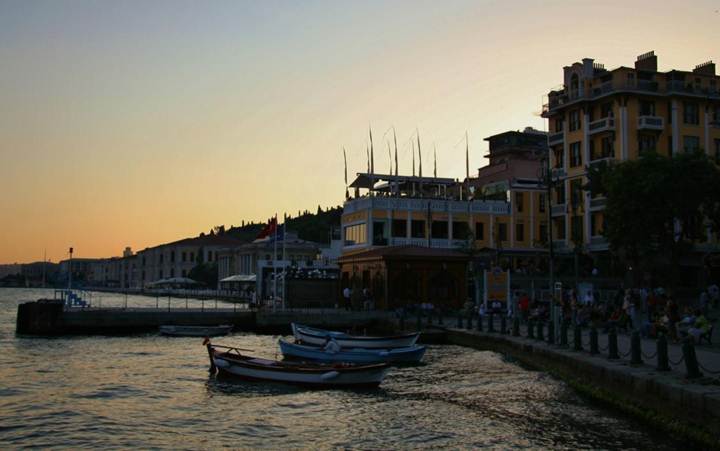



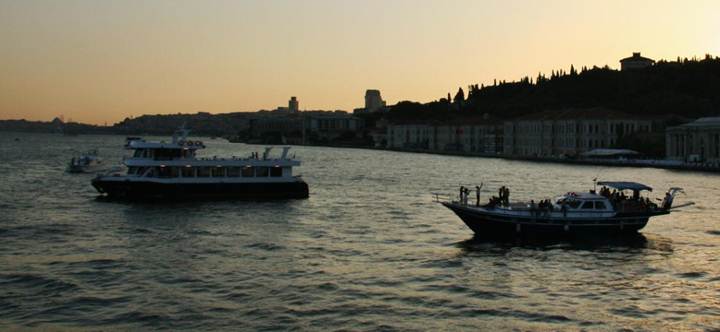

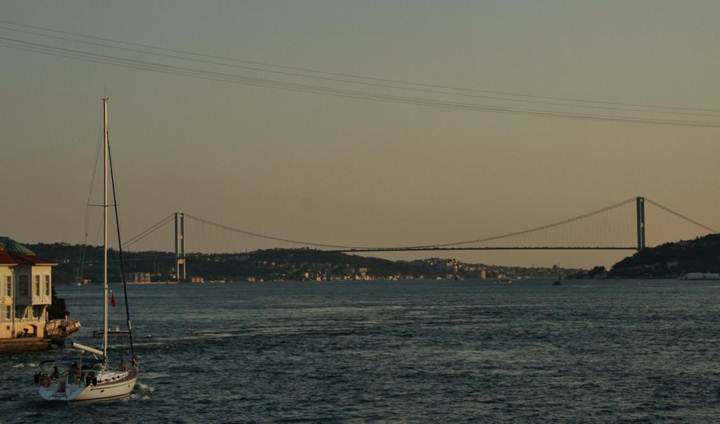

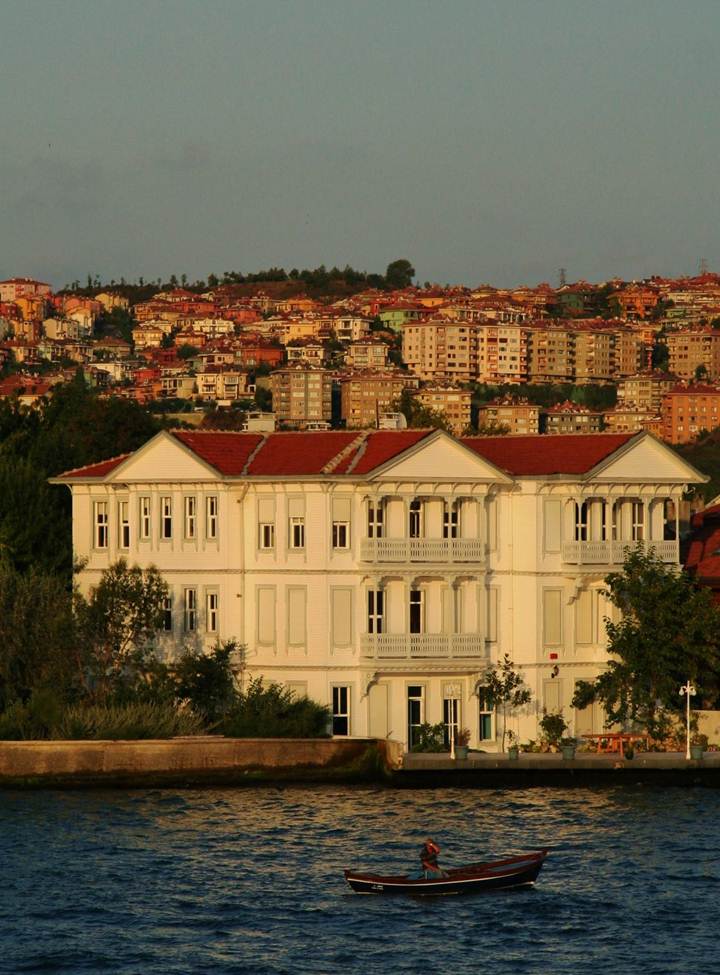
- Bookmark :
- Digg
- del.icio.us
- Stumbleupon
- Redit it
Lithuania recognizes ‘fact of Turkish mass killings’ in Armenia during WWI
- Posted by - (0) Comment
![]()
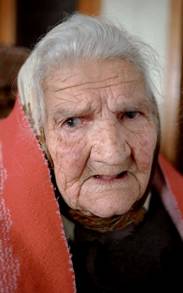
Genocide Survivor, Arax, Armavir Region, Republic of Armenia
Photo: http://globalvoicesonline.org
Diplomatic relations between France and Turkey are tending towards zero. That’s how Ankara has reacted to the French Senate’s approval of a bill that outlaws any public denial that the killings of Armenians which took place in the Ottoman Empire in 1915 were genocide. Turkey threatened to retaliate by introducing anti-French sanctions. The first blow came from the Turkish National Radio and Television Corporation which suspended cooperation with Euronews TV.
Earlier, Turkey recalled its ambassador from Paris, froze its political, military and economic ties with France and cancelled joint military exercises.
The bill imposes a punishment of up to one year in prison and a 45,000-euro fine on anyone who dares deny the Armenian genocide. President Nicolas Sarkozy has two weeks to sign it into law.
Turkey has vigorously protested the accusations of mass killings of Armenians during the First World War and reacted painfully to Western criticism. Meanwhile, the fact of genocide has been recognized by more than 20 countries, including Russia, Lithuania, Greece, Belgium, Canada and the majority of U.S. states. But that recognition envisaged no criminal penalties. Political analyst Stanislav Tarasov told the Voice of Russia that the fate of the genocide bill in France is still pretty vague and that 86 senators who voted against may attempt to block it:
"The Turks may try to play the French senator card. Senators can appeal the bill in the Constitutional Court. This would require just 60% of the votes. Turkey also fears that other countries may follow suit and pass similar genocide laws, which would derail its long-cherished hopes to join the European Union. Finally, Turkey and Armenia might return to the Zurich protocols they signed in 2009. They contain a very important provision, namely that Yerevan agrees to move the genocide issue from big politics to the academic sphere."
Some politicians in Ankara and in European capitals think that the past should be left in the past and that modern politics should be based on modern realities. And yet, genocide is too sensitive an issue for Armenia to be easily dropped. The Armenian government has already thanked Paris for support. The votes of 600,000 French Armenians whose representatives lobbied the new law will give President Sarkozy a significant boost in his bid for re-election.
- Bookmark :
- Digg
- del.icio.us
- Stumbleupon
- Redit it
VilNews e-magazine is published in Vilnius, Lithuania. Editor-in-Chief: Mr. Aage Myhre. Inquires to the editors: editor@VilNews.com.
Code of Ethics: See Section 2 – about VilNews. VilNews is not responsible for content on external links/web pages.
HOW TO ADVERTISE IN VILNEWS.
All content is copyrighted © 2011. UAB ‘VilNews’.

 Click on the buttons to open and read each of VilNews' 18 sub-sections
Click on the buttons to open and read each of VilNews' 18 sub-sections 













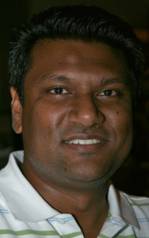
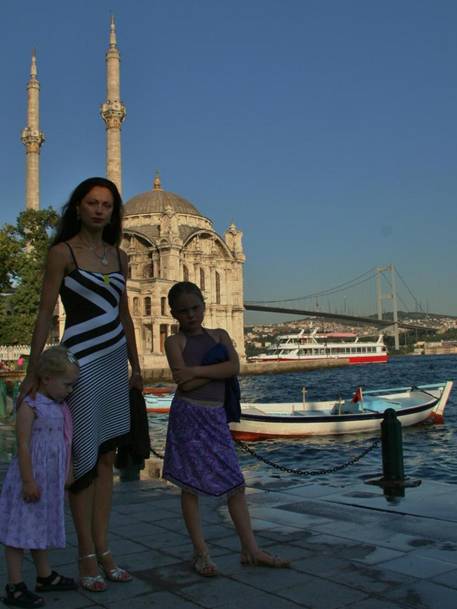






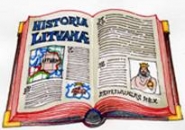
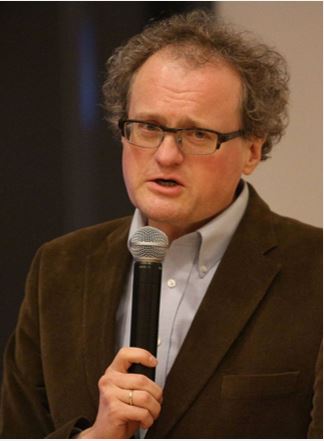
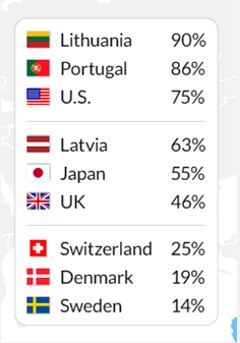
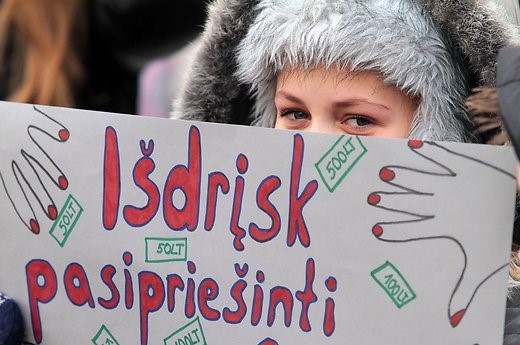
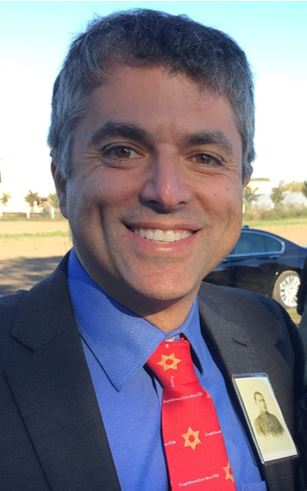
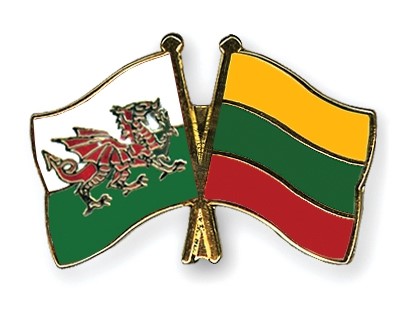


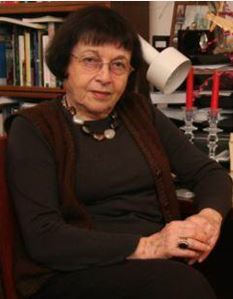
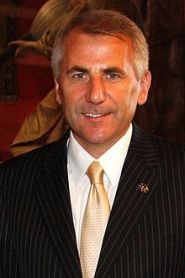
.jpg)
